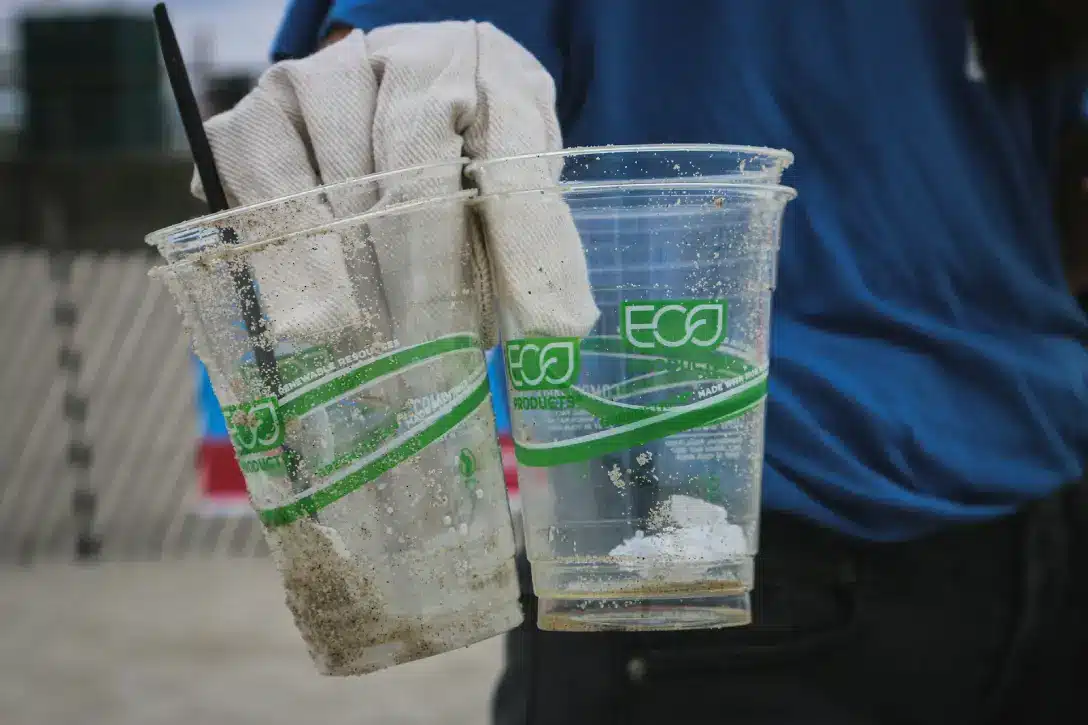Earth is on the brink, and no one is paying attention. However, the Earth is a massive rock and is in no danger from greenhouse gases and overheating. Instead, it is us humans who are hurtling towards our doom.
Greenwashing occurs when a company creates the false impression of being environmentally friendly through misleading claims. Consumers who are aware of greenwashing tactics are less likely to support products that misrepresent their sustainability efforts. By choosing products with credible environmental certifications, such as the FSC® label, consumers can support genuinely sustainable practices.
However, greenwashing can be tricky to identify. This article aims to equip the public with the tools to recognize misleading claims and make informed decisions. Greenwashing not only frustrates consumers who want to make responsible purchases, but it also undermines organizations that are genuinely contributing to sustainability efforts. It slows progress on environmental issues and complicates efforts to achieve meaningful change.
What Greenwashing Is—and Is not
It is crucial to understand that greenwashing specifically refers to misleading consumers about a company’s environmental practices. While a company might engage in unethical behavior in other areas, this does not automatically mean they are greenwashing. Greenwashing centers on deception about environmental practices.
When in doubt, rely on products with third-party certifications, such as those from the Forest Stewardship Council® (FSC®), which provide verified assurance of sustainability.
How to Spot Greenwashing Tactics
- Vague Sustainability Claims
Be cautious of terms like “eco-friendly” or “natural” that lack specifics or certifications. Truly sustainable companies are transparent about their environmental impact and provide data to back up their claims. - Misleading Photos
Images of nature can evoke thoughts of sustainability, even when a product is not actually environmentally friendly. Look beyond marketing and consider the full lifecycle of the product. - The Subtle Bait-and-Switch
Companies highlight a small, sustainable feature to divert attention from the overall environmental impact of a product. For instance, a company might advertise a water bottle with a recycled plastic lid, while the bottle itself is made from new plastic. - Lack of Transparency
Look for detailed information about a company’s environmental practices. If they hide or fail to provide proof of their claims, it is a red flag. - Hollow Emotional Appeals
Protecting the planet is an emotional issue. Be wary of companies that exploit this emotion without meaningful environmental action behind their claims.
Common Greenwashing Tactics
- Unsubstantiated Net Zero Claims: Companies may claim they are on track to achieve net-zero emissions without a credible plan.
- Vague Statements: Companies may use broad, non-specific language about their operations or materials.
- Misleading Labels: Terms like “green” or “eco-friendly” lack standardized definitions, making them easy to misuse.
- Exaggerated Claims: Companies may emphasize a small environmental improvement or a product meeting minimal standards as though it is a major leap forward.
- Focus on One Attribute: Companies may highlight a single sustainable feature while ignoring other environmental impacts.
- Irrelevant Claims: Companies may tout avoiding illegal or non-standard practices that do not significantly affect the product’s environmental impact.
- Isolated Sustainability Claims: Companies may promote the sustainability of a sole product while neglecting the larger environmental consequences of their production methods.
Why Greenwashing Matters
Science is clear: greenhouse gases from human activity have contributed to global warming, causing more severe weather events like storms, floods, and wildfires. To limit climate change and protect the planet, we need to reduce emissions by half by 2030 and achieve net-zero emissions by 2050. Every fraction of a degree of warming counts, and as stated by the former chair of the High-Level Expert Group on Net-Zero Emissions Commitments of Non-State Entities, “the planet cannot afford delays, excuses, or more greenwashing.”
Greenwashing undermines credible sustainability efforts and makes it harder for consumers, investors, and the public to trust environmental claims. This damages the momentum needed to address the climate crisis and create a sustainable future.
What You Can Do
- Learn
Educate yourself on common greenwashing tactics and how to recognize genuine sustainable practices and products. Understanding what to look for helps you make better choices. - Spend Wisely
When possible, research companies to find those that responsibly manage resources and are committed to reducing emissions and waste. Look for companies that align with global climate and sustainability initiatives, like the UNFCCC’s Race to Zero or the Fashion Industry Charter for Climate Action. - Consider the Product Lifecycle
When evaluating a product, think about its entire lifecycle—from raw material extraction to disposal. Consider the environmental impact of its materials and packaging. - Hold Companies Accountable
Tracking a company’s progress toward net-zero goals can be challenging. However, UN-backed credibility standards and criteria offer a way to identify companies that are taking bold and credible steps toward sustainability.
By being informed and holding companies accountable, you can help combat greenwashing and support genuine sustainability efforts.








